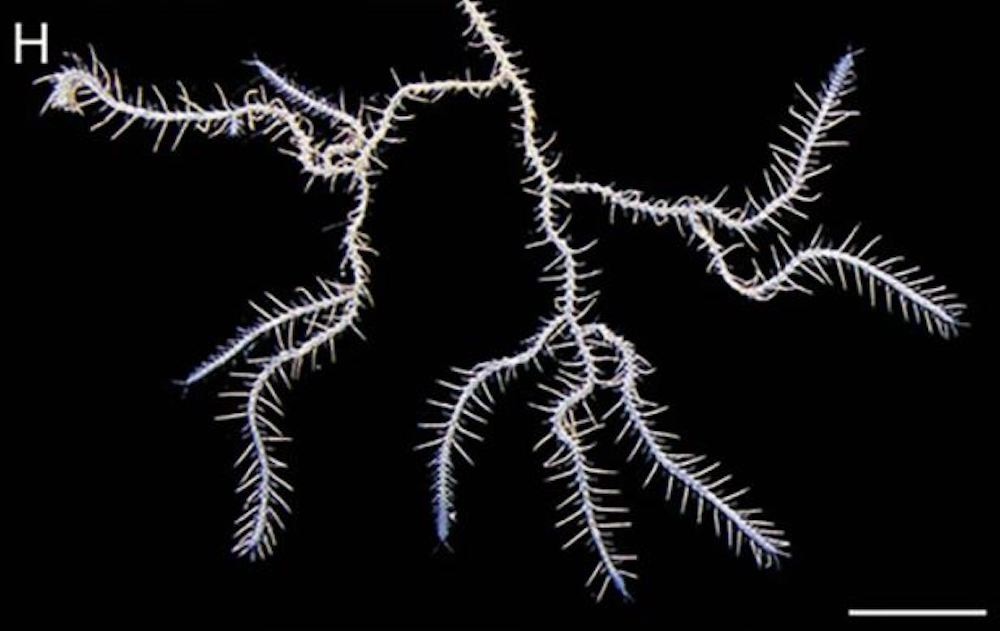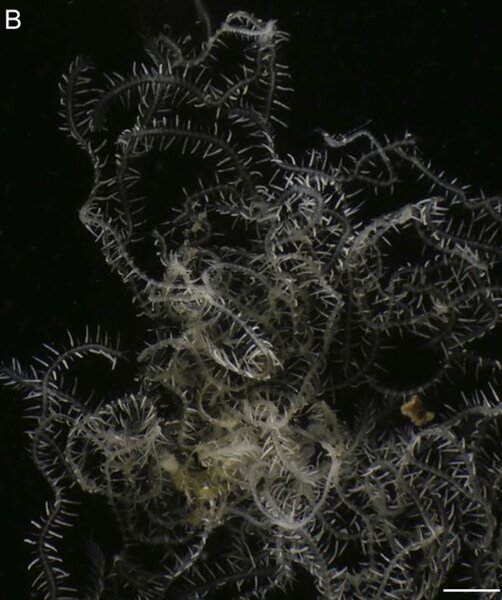Create a free profile to get unlimited access to exclusive videos, sweepstakes, and more!
The King Ghidorah worm has one head but many branching butts
Monsters are real and they live inside sponges.

Sea sponges are weird all on their own, but their tenants are even weirder. Many sponges are host to a variety of worm species which live inside their digestive canals. The exact nature of these relationships isn’t totally clear, but they appear to be symbiotic in many cases. The sponge offers protection and food to the worm, and the worm assists — sometimes through bioluminescence — with attracting food.
A newly discovered species of worm residing inside sea sponges has ratcheted up the weirdness factor to another level with its unusual, branching body. A team of Japanese scientists discovered the worm and immediately recognized it as something special. In a case of life imitating art (or perhaps the opposite, these worms surely predate the advent of movies), the worm resembles the body plan of mythical monsters like Godzilla’s rival King Ghidorah. Scientists named the worm Ramisyllis kingghidorahi, in honor of the famed creature.
M. Teresa Aguado from Georg-August-Universität in Germany, and their colleagues, described the worm in a new paper published in the journal Organisms Diversity & Evolution. Unlike more typical worms which have linear body plans, R. kingghidorahi has many branching body sections that more closely resemble the roots of a tree.
This type of body plan in worms is unusual, accounting for only three known species out of more than 22,000 documented worms. The previous species were discovered in 1879 and 2012, and this third discovery suggests there might be a higher diversity of branching worms than we previously supposed, with more species waiting to be found. In nature, one example might be an anomaly, two can be a coincidence, but three suggests a pattern.
“The ramified bodies of the branching syllids might mirror the intricate labyrinth of the sponge canal system in which they live. This special tree-shaped body is probably optimal for living inside host sponges but would probably not be successful if the animal lived outside the sponge,” Aguado told SYFY WIRE.
This new species is a segmented worm, which means it grows by adding new segments from an area on the body known as a segment addition zone (SAZ). In branching worms, the body has multiple SAZs, allowing for the addition of new segments simultaneously at multiple locations.
In R. kingghidorahi, however, the worms are able to build new segments in other places as well, including laterally from already developed segments. While this worm has been named for Ghidorah, with its many heads, it’s actually a sort of natural opposite with only one head and many branching posterior ends.
The team suggests the branching bodies might have been an evolutionary response to a change in habitat. Standard worms with their linear bodies initially emerged to live free-roaming lives in ocean sediments. Moving into the canal systems of sponges fundamentally changed their environment to one with many varied routes for exploration and expansion. It’s possible these worms co-opted previously existing regenerative and reproductive mechanisms which are now manifesting in novel ways.
There is much about these types of worms which remain unclear. Key among these is how the worms feed and obtain the required nutrients to sustain their ever-growing bodies.
“They get really big! They reach a huge size compared with other syllids, which usually measure in millimeters to centimeters. In Ramisyllis multicaudata, the closest relative from Australia, we have estimated that they may reach 30 meters long if we were able to put all branches linearly one after another,” Aguado said.
The question then becomes why these worms evolved toward a body type which may be energetically expensive. Scientists suggest that having multiple posterior ends could result in increased reproduction by allowing for the production of offspring at multiple locations. That could be particularly important to R. kingghidorahi as its population, at least to this point, appears to be small.
Evolution is, after all, a constant race to the top, and the existence of these worms shows us that sometimes the best way to keep winning is to branch out.



























